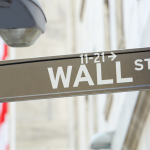The stock of Unilever plc ADR (UL) has seen a -0.58% decrease in the past week, with a 0.41% gain in the past month, and a 1.79% flourish in the past quarter. The volatility ratio for the week is 0.90%, and the volatility levels for the past 30 days are at 0.73% for UL. The simple moving average for the past 20 days is -0.21% for UL’s stock, with a -0.61% simple moving average for the past 200 days.
Is It Worth Investing in Unilever plc ADR (NYSE: UL) Right Now?
Unilever plc ADR (NYSE: UL) has a price-to-earnings ratio that is above its average at 17.82x. The stock has a 36-month beta value of 0.45. Opinions on the stock are mixed, with 0 analysts rating it as a “buy,” 0 as “overweight,” 1 as “hold,” and 0 as “sell.”
The public float for UL is 2.50B, and at present, short sellers hold a 0.08% of that float. On April 03, 2024, the average trading volume of UL was 2.74M shares.
UL) stock’s latest price update
The stock of Unilever plc ADR (NYSE: UL) has decreased by -1.00 when compared to last closing price of 49.85. Despite this, the company has experienced a -0.58% fall in its stock price over the last five trading sessions. InvestorPlace reported 2024-03-30 that It’s been a tough road for consumer discretionary stocks since the pandemic ended. Sky high inflation, rising interest rates and economic worries have led consumers to tighten their purse strings.
Analysts’ Opinion of UL
Many brokerage firms have already submitted their reports for UL stocks, with Morgan Stanley repeating the rating for UL by listing it as a “Underweight.” The predicted price for UL in the upcoming period, according to Morgan Stanley is $48 based on the research report published on February 27, 2024 of the current year 2024.
UL Trading at -0.13% from the 50-Day Moving Average
After a stumble in the market that brought UL to its low price for the period of the last 52 weeks, the company was unable to rebound, for now settling with -11.86% of loss for the given period.
Volatility was left at 0.73%, however, over the last 30 days, the volatility rate increased by 0.90%, as shares surge +0.43% for the moving average over the last 20 days. Over the last 50 days, in opposition, the stock is trading +4.62% upper at present.
During the last 5 trading sessions, UL fell by -0.58%, which changed the moving average for the period of 200-days by -1.73% in comparison to the 20-day moving average, which settled at $49.46. In addition, Unilever plc ADR saw 1.79% in overturn over a single year, with a tendency to cut further gains.
Stock Fundamentals for UL
Current profitability levels for the company are sitting at:
- 0.16 for the present operating margin
- 0.68 for the gross margin
The net margin for Unilever plc ADR stands at 0.12. The total capital return value is set at 0.33. Equity return is now at value 34.81, with 8.44 for asset returns.
Based on Unilever plc ADR (UL), the company’s capital structure generated 0.61 points at debt to capital in total, while cash flow to debt ratio is standing at 0.53. The debt to equity ratio resting at 1.56. The interest coverage ratio of the stock is 11.46.
Currently, EBITDA for the company is 11.54 billion with net debt to EBITDA at 1.26. When we switch over and look at the enterprise to sales, we see a ratio of 1.33. The receivables turnover for the company is 16.94for trailing twelve months and the total asset turnover is 1.4. The liquidity ratio also appears to be rather interesting for investors as it stands at 0.76.
Conclusion
To sum up, Unilever plc ADR (UL) has seen a mixed performance recently. Analysts have differing views on the stock, with some seeing it as a “buy” and others as a “hold”. It’s important to note that the stock is currently trading at a significant distance from its 50-day moving average and its 52-week high.





